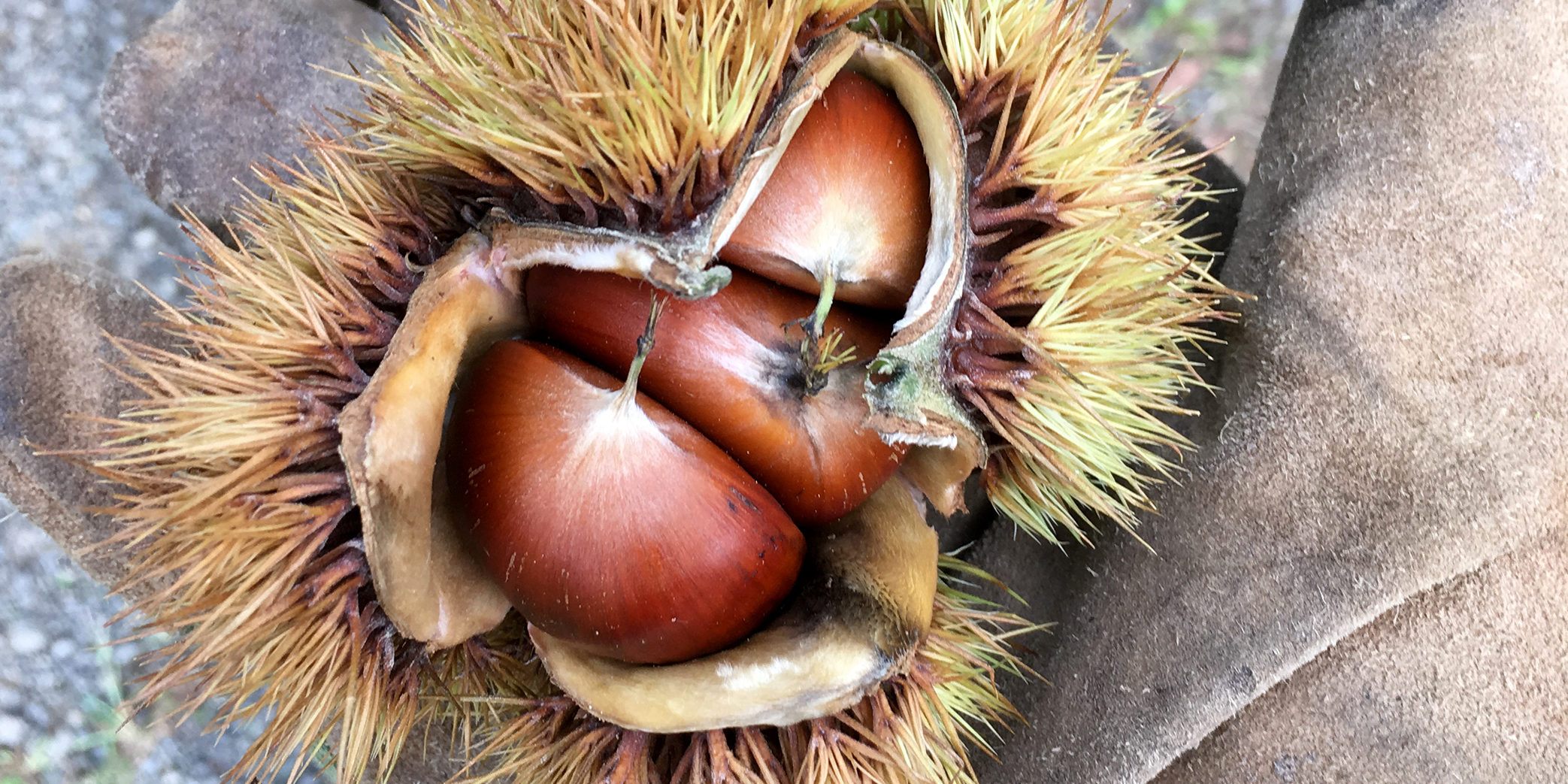
Growing Chestnut Agroforestry in New England
What is Agroforestry?
Agroforestry is a system of combining perennial crops to get multiple benefits and yields within an area. By integrating crops that mutually support each other and use space efficiently, the benefits to the farm and farm resilience grow. There are several strategies in the agroforestry lexicon: silvopasture – grazing livestock within tree crops; alley cropping – alternating rows of perennial trees and/or shrubs with annuals, herbaceous perennials, or even a nursery; and riparian buffer production – where crops suitable for streamside conditions are grown for both farm yields and conservation value. Other strategies include windbreaks, hedgerows, and forest farming. But whatever the strategy, a key distinction between agroforestry and other types of farming and forestry systems are that they are intentional, intensive, interactive, and integrated.
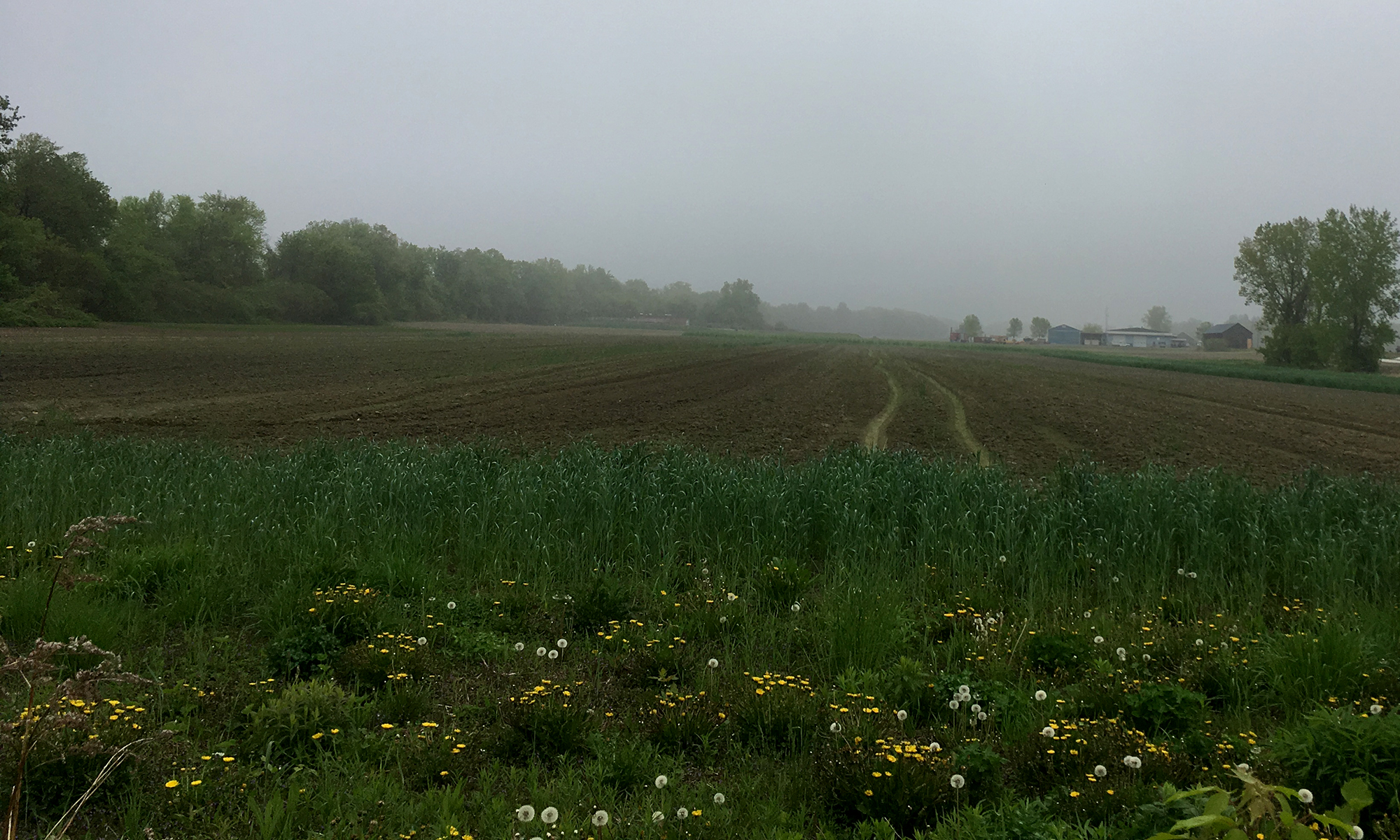
Big River Chestnuts: A chestnut agroforestry project for food, soil health, demonstration, and regional resilience.
Last year, RDG’s Jono Neiger signed a lease for land along the Connecticut River in Sunderland, MA and got to work planting seven acres of chestnuts. He chose blight-resistant varieties of Chinese chestnuts and Chinese hybrids. These varieties are quick-growing and produce nuts beginning in years three to five. Named Big River Chestnuts, this project will be a demonstration of an integrated chestnut agroforestry system that, because of its riverside location, also has productive riparian buffer value. The next steps of grazing livestock and/or alley cropping with small fruit is still in the planning phase. Jono hopes to have these pieces in place in the coming year as the chestnut trees get more established.
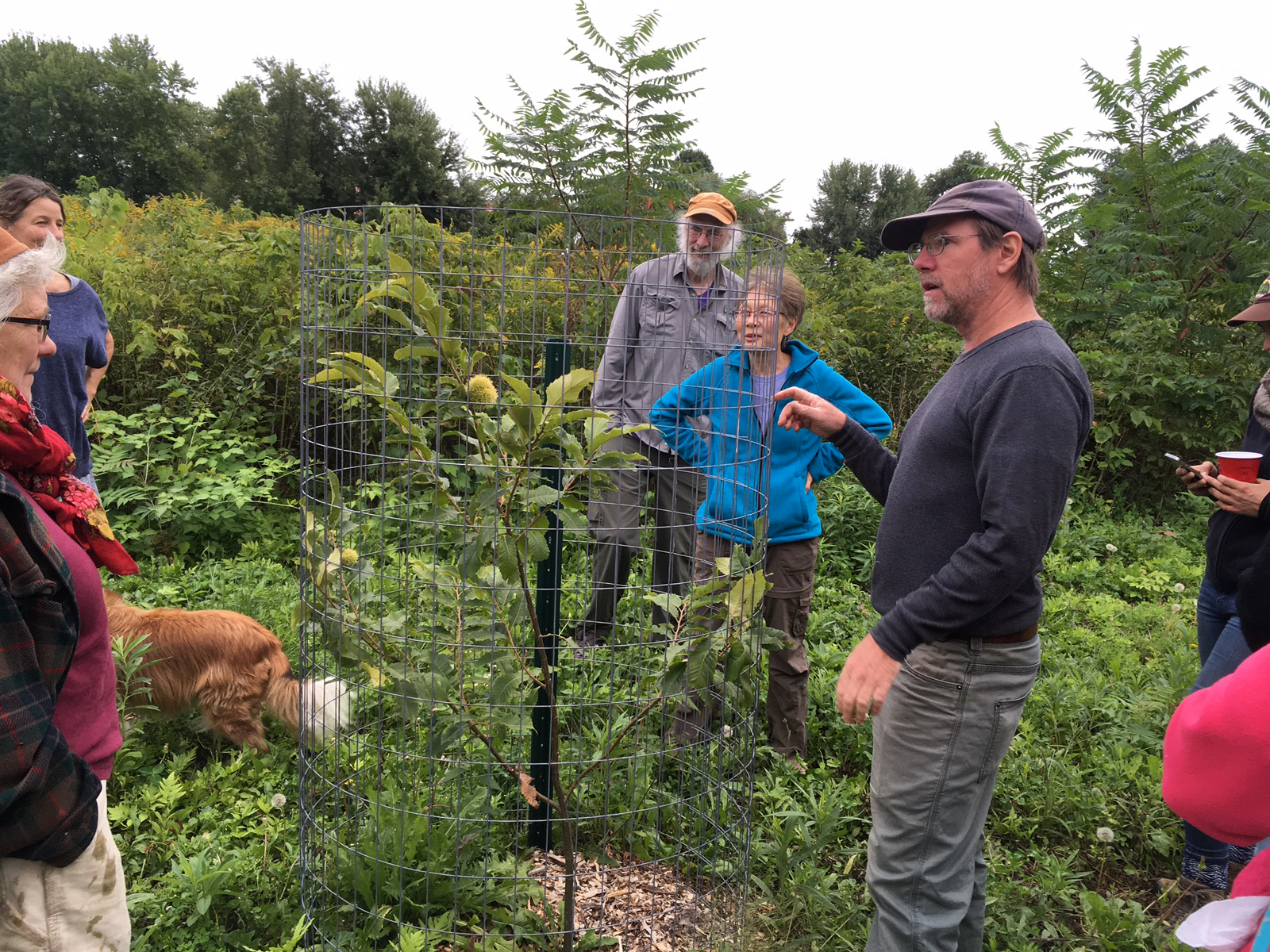
Big River Chestnuts is part of a broader effort to develop a chestnut industry in the northeast, by demonstrating to farmers and landowners best practices around establishment, care, and harvest. There are numerous Chinese chestnuts growing and producing in the northeast from various efforts over the last 30 years, including Amherst’s Sunset Farm and New Haven’s Connecticut Ag Experiment Station. As the new crops at Big River begin to bear there will be opportunities to scale up processing, distribution, and incorporation of chestnuts into the regional food system.
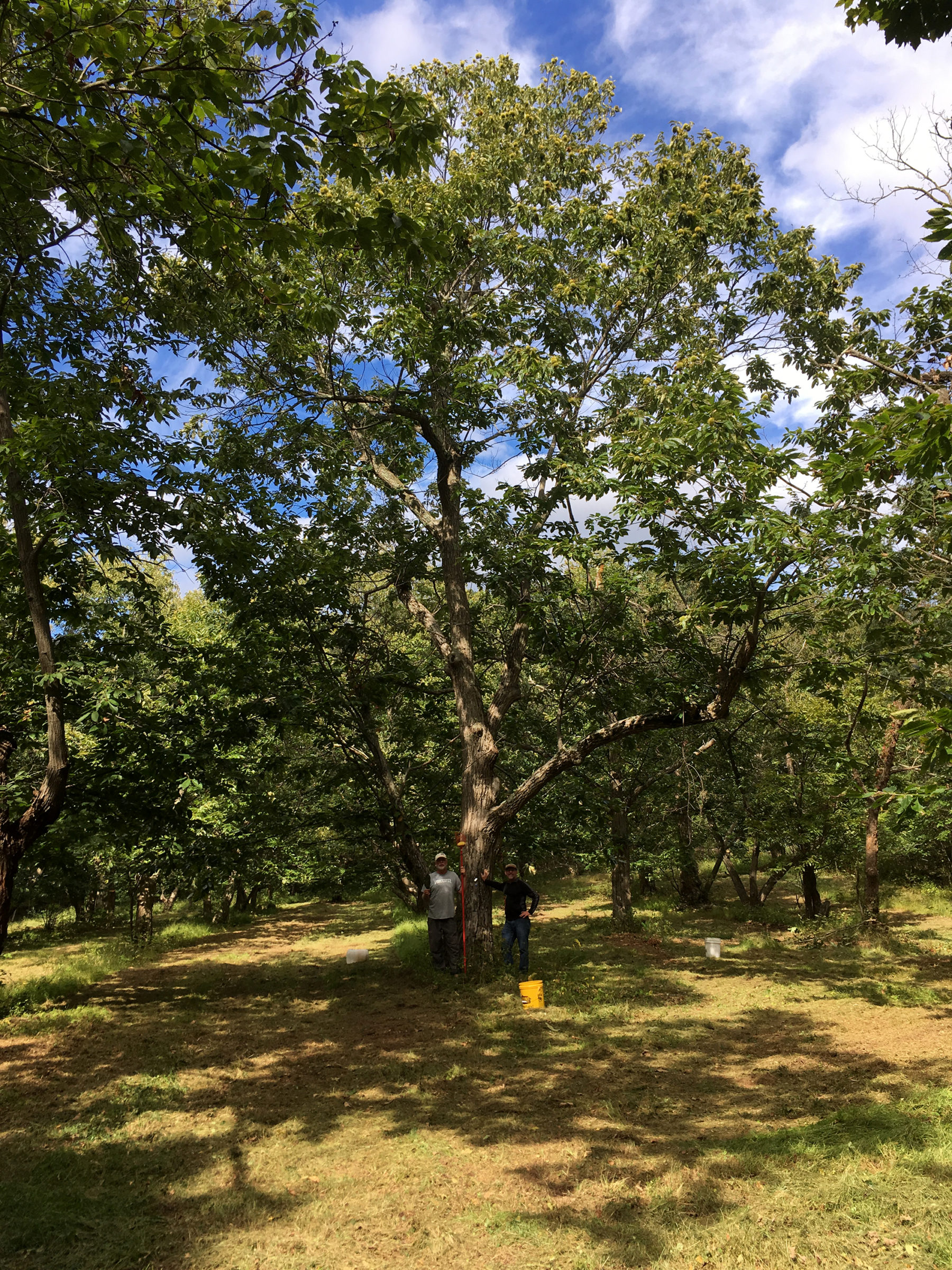
Cultural Connections
Chestnuts are widely grown and consumed throughout Asia, eastern Europe, and the Mediterranean, where cultural connections to the chestnut are marked by food festivals, regional dishes, and seasonal celebrations. In contrast, the U.S. produces less than 1% of global chestnut production, and separate consumption data for the U.S. isn’t tracked. But the chestnut (mainly Castanea dentata) was once a defining presence in the North American landscape, making up nearly a quarter of hardwoods in the Appalachian Mountains. Until the blight of the early 1900s, the fruit of the chestnut tree was a staple of many Native American diets; and chestnut lumber was a main building material in barns and homes east of the Mississippi. Today, there are about 2,500 acres of chestnuts grown in the U.S. It has been estimated that we would need 10,000 acres to provide for domestic consumption. Regional food planning in the northeast (A New England Food Vision) has estimated that to achieve 66% of our food grown within the region (currently its 12%) we will need 20,000 acres in nut tree production.
Why Grow Chestnuts?
- Nutrition: Chestnuts are more similar to a whole grain than most nuts, in that they are low in fat and high in carbohydrates. Chestnuts are high in manganese, vitamin C, vitamin B6 and copper. Chestnut flour is gluten-free and can easily be incorporated into baked goods.
- Ecosystem function: Chestnuts are a good fit in a diverse agroforestry system with livestock or alley cropping. Their deep roots stabilize and improve soils and increase carbon sequestration.
- Economic function: Chestnuts are a promising addition to a regional food economy that prizes healthy, perennial food crops.
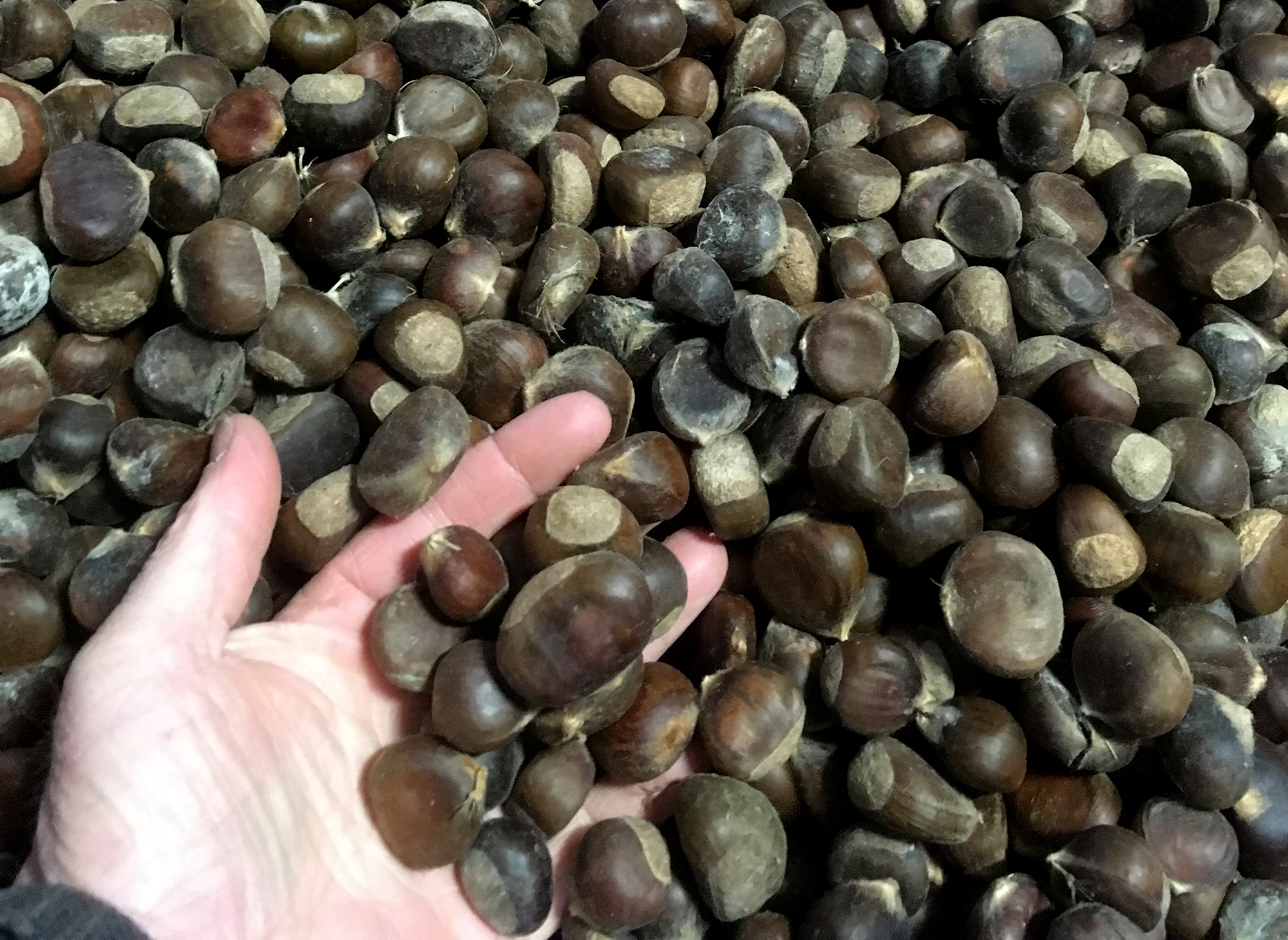
Growing Conditions
Chestnuts can be grown in zones 5 through 9. Trees can survive average minimum lows of -20 deg F and need at least 100 frost-free days from flowering to harvest. They prefer full sun and acidic, well-drained soils. Chestnuts are tough and adaptable to drought – they can adjust to most places, as long as it’s not too wet, with high groundwater around the roots. They are a good choice for hillside agriculture or where restoration of degraded agriculture land is underway.
Looking Ahead
Over the next few years we aim to get more acreage into chestnut production, ideally in mixed use, agroforestry systems. We’ll develop processing and distribution channels and establish test plots to better understand which varieties are best adapted to the northeast climate and hold promise for increased yield, nut size, flavor, pest resistance, and storage quality. It’s an exciting time to develop chestnut agroforestry. Interest in local, healthy food is always growing, as is an interest in regenerative agriculture practices.
Be sure to check back for updates on Big River Chestnuts, developments in RDG’s other agroforestry planning projects and reports from this year’s agroforestry conferences!
November 2019 Update: Check out this article about Big River in the Christian Science Monitor!
*The effort to grow Chinese chestnuts is different than the effort to bring back the American Chestnut. They are different trees (though there are hybrids and much of the blight resistance being bred into the Americans is from blight resistant Chinese chestnuts). Both are excellent projects with different goals.

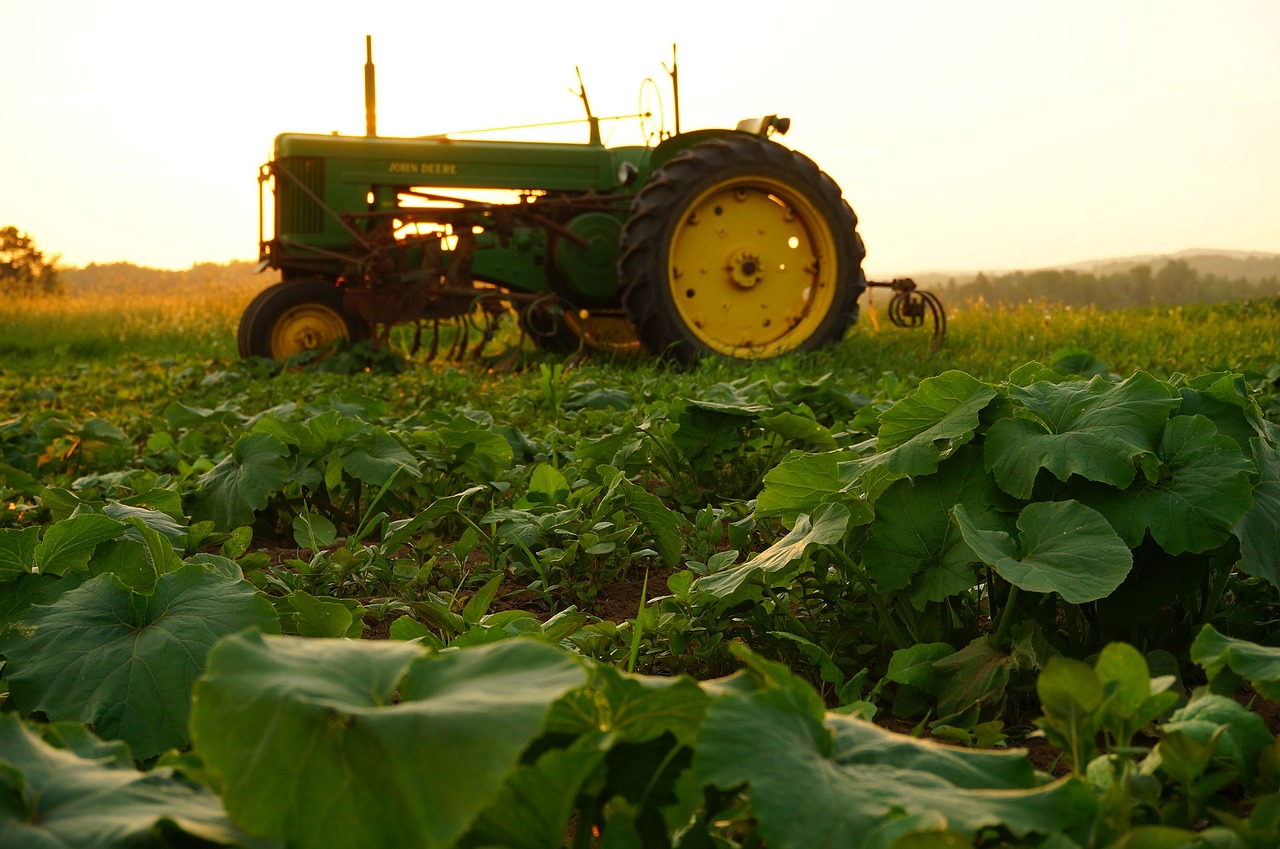

Do you sell seedlings?
We don’t sell seedlings, but you could get in touch with Jono Neiger for some good resources – jono@rdgland.com